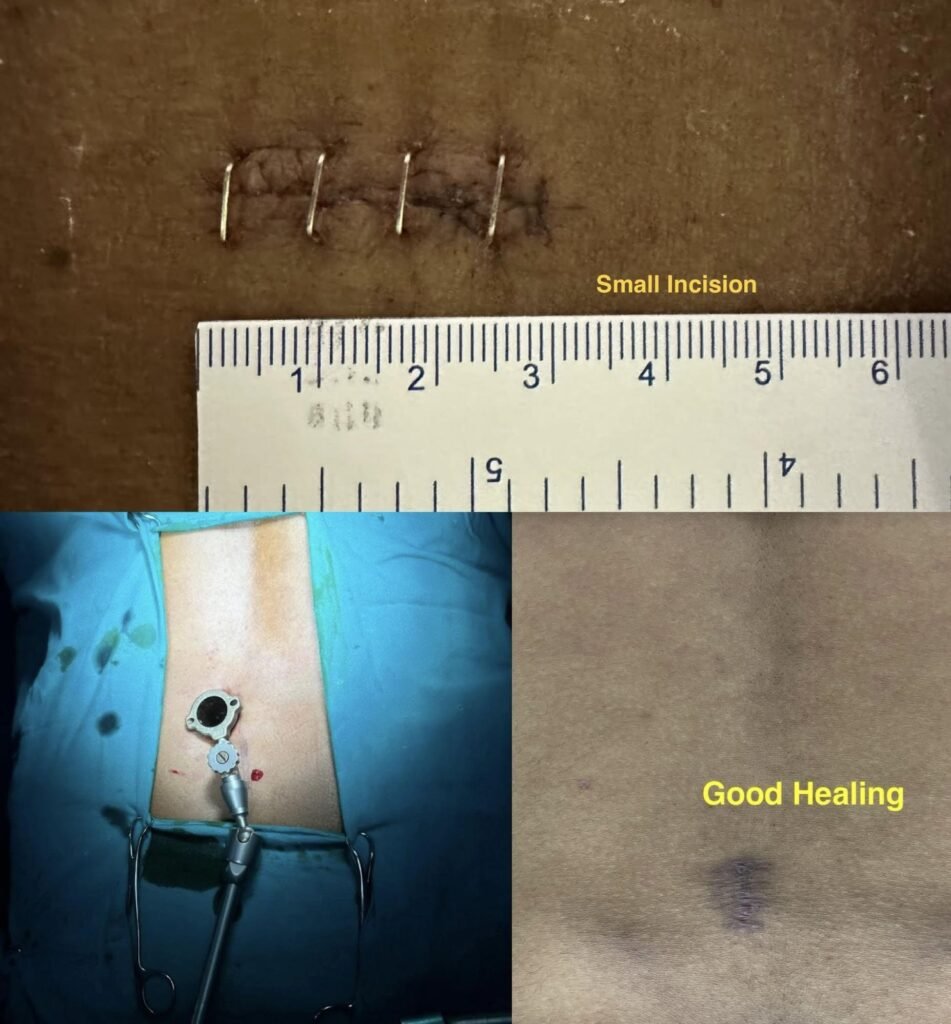Minimal Invasive Endoscopic Spine Surgery

What is MINIMAL INVASIVE ENDOSCOPIC SPINE SURGERY
Minimal Invasive Endoscopic Spine Surgery is a surgical technique used to treat various spinal conditions through small incisions using an endoscope, a thin, flexible tube with a camera and light attached. This approach allows surgeons to access the spine with minimal disruption to surrounding tissues.
Symptoms:
Symptoms of spinal conditions vary depending on the specific diagnosis but may include back or neck pain, radiating pain into the arms or legs, weakness, numbness, or tingling in the limbs, and difficulty with balance or coordination.
Primary Symptoms:
The primary symptoms that may indicate a need for Minimal Invasive Endoscopic Spine Surgery include:
- Chronic or severe back or neck pain that does not respond to conservative treatments such as medication or physical therapy.
- Radiating pain into the arms or legs, often accompanied by weakness, numbness, or tingling.
- Progressive neurological deficits, such as difficulty walking or loss of bowel or bladder control.
Diagnosis/Treatment/Why Surgery Required:
- Diagnosis typically involves a thorough medical history, physical examination, and imaging studies such as X-rays, CT scans, or MRI to identify the cause and location of the spinal condition.
- Treatment options may include conservative measures such as rest, physical therapy, medication, or injections. However, if conservative treatments fail to provide relief or if there is evidence of nerve compression or spinal instability, surgery may be recommended.
- Minimal Invasive Endoscopic Spine Surgery is often preferred because it offers advantages such as smaller incisions, less damage to surrounding tissues, shorter hospital stays, and quicker recovery times compared to traditional open surgery.
What to Expect After Surgery:
- After Minimal Invasive Endoscopic Spine Surgery, patients can expect less postoperative pain, shorter hospital stays, and quicker recovery times compared to traditional open surgery.
- Most patients can resume light activities within a few weeks and return to normal activities within a few months, depending on the type of surgery and the individual patient’s recovery.
- Physical therapy may be recommended to help strengthen the muscles supporting the spine and improve mobility and function.
Risks & Complications:
- While Minimal Invasive Endoscopic Spine Surgery is generally safe, there are risks associated with any surgical procedure, including infection, bleeding, nerve injury, and complications related to anesthesia.
- Additionally, there may be a risk of incomplete decompression or fusion, recurrence of symptoms, or complications specific to the surgical technique used.
However, complications are relatively rare, and the benefits of surgery often outweigh the risks, particularly when conservative treatments have failed to provide relief or when there is evidence of nerve compression or spinal instability that requires surgical intervention.
Spine Treatments
About Dr. Bharat
Dr Bharat Shinde completed his M.Ch Neurosurgery from the National Institute Of Mental Health And Neurosciences (NIMHANS), Bangalore which is an institute of National importance.
